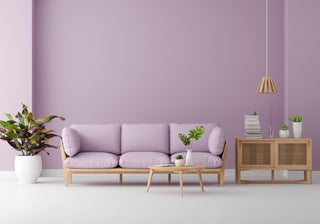Living in a compact space doesn’t mean sacrificing style or comfort. With thoughtful furniture choices, even the smallest apartments and studios can feel spacious, organized, and beautifully designed. The key lies in selecting pieces that serve multiple purposes, optimize storage, and maintain a sense of openness. This guide explores how to furnish small spaces with functionality and flair.
The Principles of Small-Space Design
Successful small-space living begins with intentional design. Every piece of furniture should earn its place by offering both aesthetic appeal and practical use. Prioritizing clean lines, light colors, and multifunctional designs helps create an airy, uncluttered feel. The goal is to maximize every square foot without making the space feel cramped or chaotic.
Multifunctional Furniture Essentials
The foundation of small-space living lies in furniture that serves more than one purpose. A sofa that converts into a guest bed provides seating by day and sleeping space by night. Ottomans with hidden storage offer extra seating while stowing away blankets or books. Drop-leaf tables can expand for dinner parties and fold down to save space when not in use. These versatile pieces eliminate the need for excess furniture while maintaining full functionality.
Smart Storage Solutions
In compact living areas, clutter can quickly overwhelm. Furniture with built-in storage helps maintain order without sacrificing style. Platform beds with spacious drawers underneath provide room for linens and clothing. Nesting tables tuck away neatly when extra surface space isn't needed. Bookshelves that double as room dividers create defined areas while displaying decor. The most effective storage furniture blends seamlessly into the overall design rather than appearing bulky or utilitarian.
Space-Saving Dining Solutions
Dining areas often consume precious floor space in small homes. Round tables take up less visual space than rectangular ones while accommodating more chairs around their perimeter. Wall-mounted folding tables create instant dining surfaces that disappear when not in use. Bench seating along walls provides more seating than individual chairs while leaving walkways clear. These solutions allow for comfortable dining without dedicating permanent space to a large table.
Bedroom Strategies for Compact Quarters
Sleeping areas benefit particularly from thoughtful furniture choices. Lofted beds free up floor space for desks or seating areas underneath. Murphy beds fold vertically into walls or cabinets, transforming bedrooms into living areas by day. Narrow-profile nightstands with vertical storage keep essentials within reach without protruding into walkways. The most successful small bedrooms use every dimension - floor, walls, and vertical space - to create a restful yet functional retreat.
Living Room Layouts That Work
Social spaces in small homes require careful furniture arrangement. Sectionals with chaise lounges often provide more seating than separate pieces while maintaining an open flow. Armless chairs visually take up less space than fully upholstered versions. Glass or acrylic coffee tables maintain surface functionality while appearing nearly invisible. The most effective layouts create clear pathways and avoid blocking natural light sources that make spaces feel larger.
Visual Tricks to Enhance Space
Certain design techniques create the illusion of more room. Furniture with exposed legs allows light to pass underneath, making pieces appear lighter. Mirrors strategically placed opposite windows reflect light and views, doubling the perceived space. Consistent color palettes with subtle variations create cohesion that feels expansive. These visual strategies complement smart furniture choices to maximize the feeling of openness.
Materials and Proportions Matter
The right materials and scales make small-space furniture more effective. Light-colored woods and upholstery help rooms feel airier. Slim-profile furniture with refined proportions fits better in tight spaces than bulky alternatives. Transparent materials like glass maintain visibility across rooms, preventing a boxed-in feeling. Scale-appropriate pieces maintain comfort without overwhelming the space.


